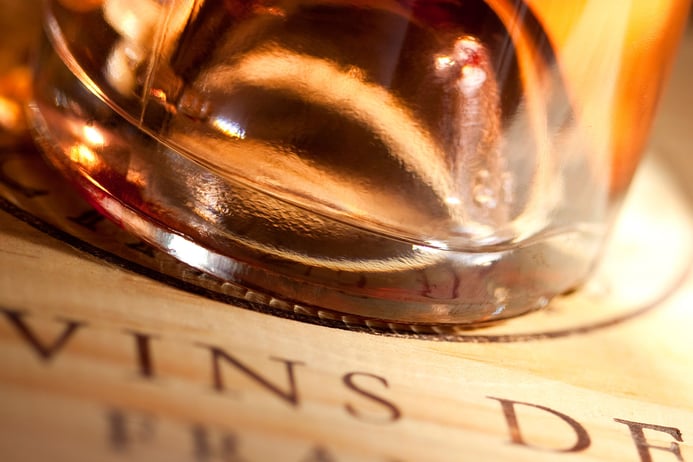According to Nielsen, the international consumer reporting agency based in the United States, Rosé wine has grown at nearly ten times the rate of the overall wine industry in the past year.
While rosé will not be replacing reds or whites in overall popularity any time soon, as it still makes up less than 2% of total table wine sales, the exponential growth in sales is a clear indicator that rosé wine is definitely having a moment.
What is Rosé?
Rosé wine, as the name implies, usually has a pink hue that is created from the skins of the grapes. The concentration of color from the grape skins in a rosé is less than what is found in red wines. As with red and white wines, there are a range of rosé wines from dry to sweet, and still to sparkling. The coloring of a rosé can vary from a light, pale, almost orange to a deep ink, almost purple hue. These variations are all contingent on how the rosé is produced. Rosé can be created through three different methods: vin gris saignée, and blending. It is worth noticing that blending, the mixing of a white and red to create a lighter tinged wine, is discouraged in many winemaking regions and actually illegal in most of France.
Why is Rosé suddenly popular?
Booming rosé wine sales has journalists fromVogue and Forbes asking one question: Why? What is it about rosé that has current wine consumers reaching for it time and again? Turns out there are a few answers, but they have more to do with a shift in who is buying wine than in the wine industry itself.
Rosé wine has developed a reputation for being a wine for those who don’t take themselves or their wine too seriously. Additionally, the majority of rosé ;wines are inexpensive – with every wine recommended in this Guardian article about rosé retailing for less than $30 US dollars. These two traits of rosé are definite selling points for Millennials.
Rosé is the alcoholic beverage of choice for most Millennials
The Milllennial Generation (anyone born between 1982 and 2004) have grown up with the internet and are some of the most prolific users of social media. In fact, the popularity of rosé wine seems to have been driven at least in part due to social media.
Erica Blumenthal and Nikki Huganir, friends who loved rosé started the Instagram account @YesWayRosé to share jokes about their favorite wine. From there, the account has grown into a complete brand. The two young women who just wanted to share their love of rosé wine now sell a full range of wine themed merchandise, all with a distinctive pale pink hue.
Truth or myth? Nonetheless, the Rosé wine trend is here to stay!





